How to Grow Cantaloupe: Tips for a Sweet Harvest
Growing cantaloupes can be a rewarding experience, especially when you enjoy the sweet, juicy fruits of your labor. To ensure your cantaloupes are sweet and bursting with flavor, it’s crucial to follow a few key practices. From choosing the right variety to perfecting your soil and watering techniques, this guide will help you grow cantaloupes that are deliciously sweet and ripe for the picking.
Article Outline:
- Choose a cantaloupe variety suited to your climate and growing conditions
- When to plant cantaloupe
- How and where to plant cantaloupe
- How to care for cantaloupe throughout the season
- Should you prune cantaloupe plants?
- Tips for growing sweet cantaloupe that is full of flavor
- When to harvest cantaloupe for the sweetest flavor
Choose a cantaloupe variety suited to your climate and growing conditions
Each climate and garden is different; luckily, there is probably a type of cantaloupe that will grow well where you live. Check with local growers or seed companies for their suggestions. You can also use these ideas to help you find the best cantaloupe for your area. If you have a short growing season, look for shorter days to harvest varieties.
- Ambrosia – sweet variety; resistant to powdery mildew.
- Mini Sugar Cube – disease resistant; small fruits; only 75 days to harvest.
- Hale’s Best Jumbo * – sweet and large; only 80 days to harvest.
- Planter’s Jumbo – does best in hot climates; resistant to powdery mildew.
- Chimayo Melon – Spanish heirloom from New Mexico.
- Hearts of Gold * – old fashioned variety with sweet flavor; only 80 days to harvest.
- Minnesota Midget – short-season variety; compact vines.
* = My favorite varieties to grow in the low desert of Arizona.
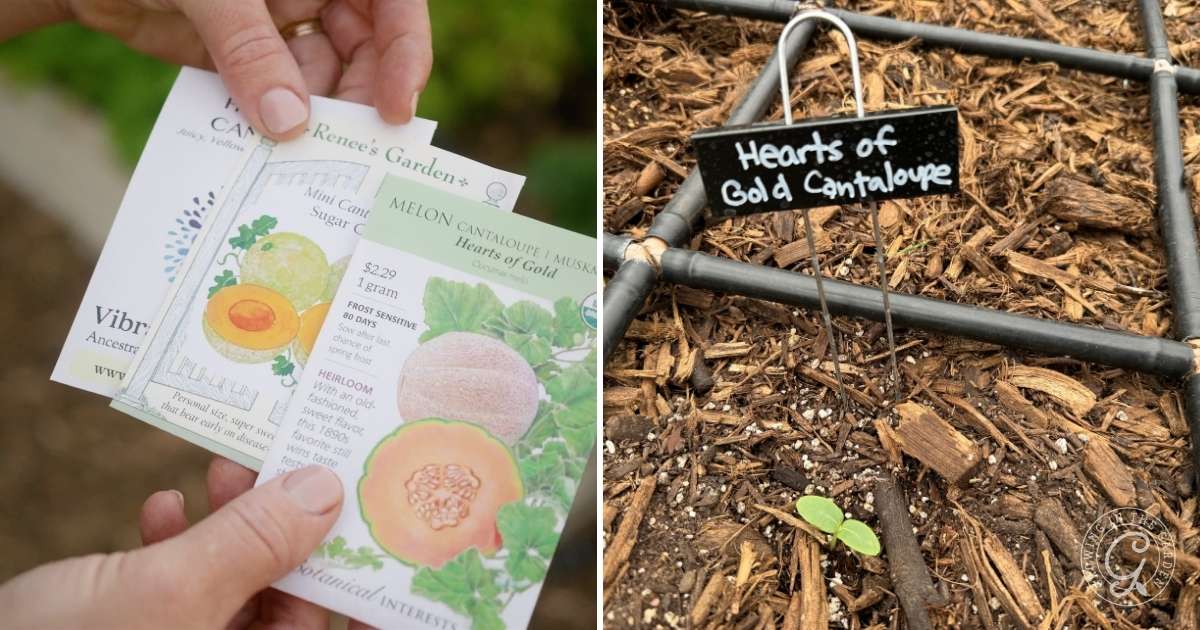
When to plant cantaloupe
Cantaloupe prefers warm weather, so don’t plant it before temperatures have warmed in the spring. Cantaloupe does best when direct sown. Sow seeds outside about 2 weeks after the last frost date when soil temperatures are about 65℉ (18°C). In the low desert of Arizona, the best time to plant cantaloupe is from February 15 through July.
In cooler zones, transplants are probably a good idea. Start seeds indoors about 3 weeks before planting outside. Transplant cantaloupe seedlings 1-2 weeks after your last frost date or when the soil is at least 65℉ (18°C) and nighttime temperatures are above 50℉ (10°C). Be careful not to disturb roots when planting to avoid transplant shock.
How and where to plant cantaloupe
Cantaloupe prefers a sunny location with well-draining soil rich in organic matter. Prior to planting, amend the soil with compost and a balanced organic fertilizer. Rich soil produces sweeter cantaloupes.
- Plant 2-3 seeds 1/4″ (.6 cm) deep.
- Thin seedlings and keep only the strongest seedling in each group.
Spacing:
- Space plants 24-36″ (60-90 cm) apart if left to sprawl on the ground.
- Space plants 12-18″ (30-45 cm) apart if growing up a trellis.
- If using square-foot gardening methods, allow 1-3 square feet for each plant if grown at the end of a bed or on a trellis. Allow more room for other areas.
Looking for ways to add vertical space to your garden? This post shares 10 of my favorite ideas. Find even more ways to add vertical space to your garden in this blog post.
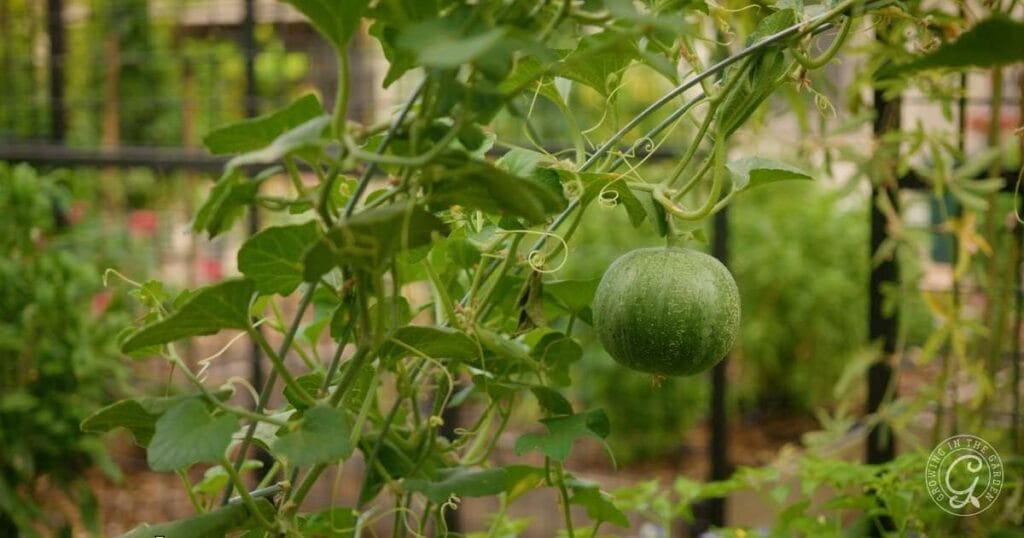
How to care for cantaloupe throughout the season
Cantaloupe thrives in warm weather and grows best when it gets regular water and plenty of sunshine.
- Water plants deeply to encourage strong root development. Allow the top couple of inches of soil to dry out before watering again.
- Mulch cantaloupe plants to help retain moisture, regulate temperature, control weeds, and keep fruit clean.
- Male flowers will appear first, followed by female flowers. If female fruit withers and dies, consider hand-pollinating future blooms.
For troubleshooting tips for common cantaloupe growing problems, read this article.
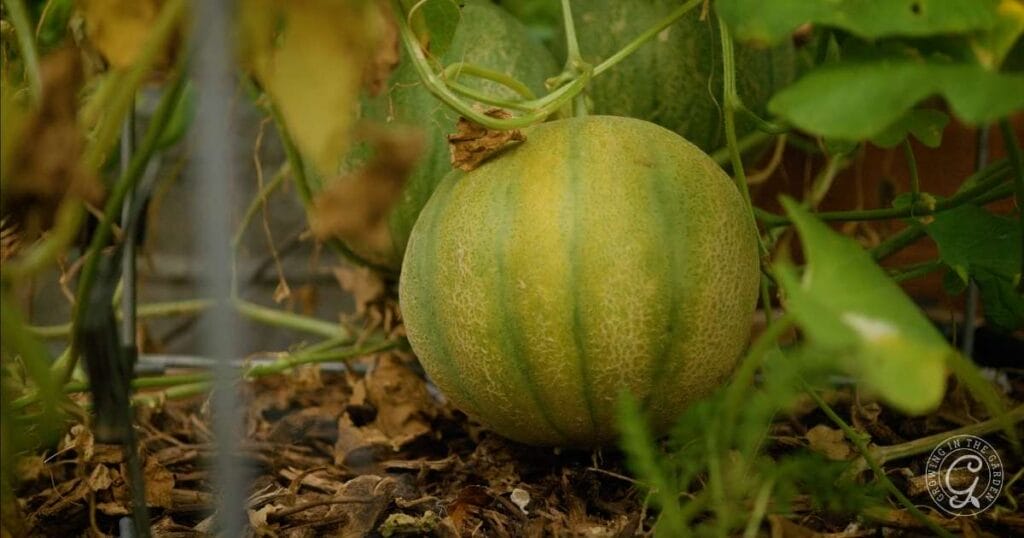
Should you prune cantaloupe plants?
Generally, allowing more leaves to remain on the vine sweetens the fruit, so pruning cantaloupe isn’t necessary. However, there are situations where it’s helpful.
- Pruning about one-third of the suckers (side shoots that form along the vine where a leaf, tendril, and flower meet) can help with airflow and disease prevention and make plants easier to the trellis.
- Pruning damaged, diseased, or infested leaves can help prevent the disease from spreading to the rest of the plant.
- Pruning off excess fruit helps you grow larger, sweeter melons. For the most flavor, allow only 1-2 melons per plant.
- If you live in a cold climate, remove blossoms that will not have time to develop before your first fall frost. This will allow the fruit already growing to ripen.
Tips for growing sweet cantaloupe that is full of flavor
- Don’t overwater while the fruit is growing. Too much water (or rain) produces bland-tasting fruit.
- Remove additional fruit once several fruits have formed. Ripening only one or two fruit at a time maximizes sweetness. The more fruit ripening on a vine at the same time, the less sweet it will be.
- Do not prune off leaves or shoots. The leaves produce the sugars that sweeten the fruits.
- About a week before melons are ripe, cut back watering as much as possible to concentrate the fruit’s sugars.
- Harvest cantaloupe at the right time (see chart below).
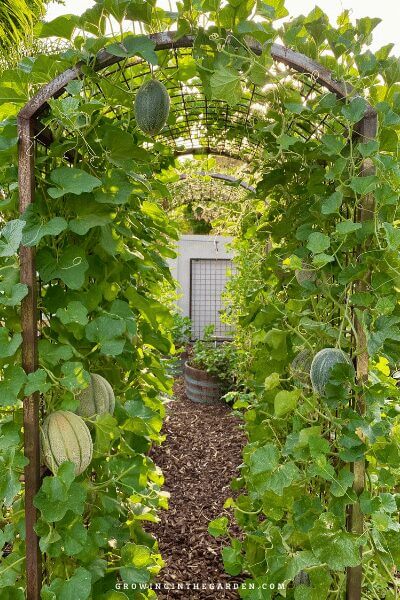
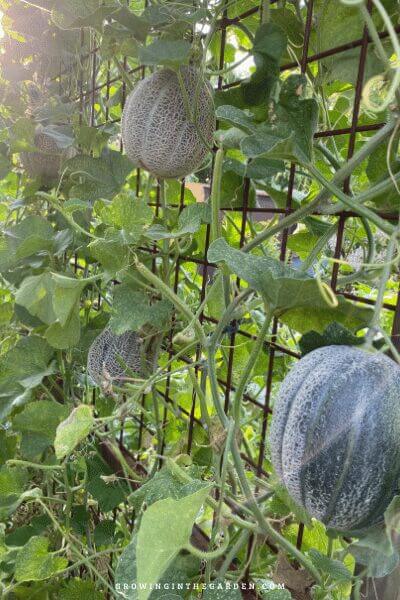
When to harvest cantaloupe for the sweetest flavor
Once picked, cantaloupe will continue to soften, but it won’t get any sweeter. Leaving it on the vine as long as possible gives it the sweetest flavor. When you grow your own cantaloupe, you can pick it at the peak of sweetness. It is so good!
| Not Ready to Harvest | Ready to Harvest | Overripe |
| Rind is green or gray | Rind is yellow | Fruit cracks |
| “Netting” on cantaloupe is smooth | “Netting” on cantaloupe becomes rough | |
| Stem has to be forcibly removed from melon | Stem easily separates from melon | Fruit falls off stem |
| End opposite of stem is hard | End opposite of stem is slightly soft; rind has a little “give” | Fruit is mushy or soft |
| No aroma | Musky, sweet aroma | Rotten or overripe smell |
| Green vines | Tendrils around fruit dry out and turn brown |
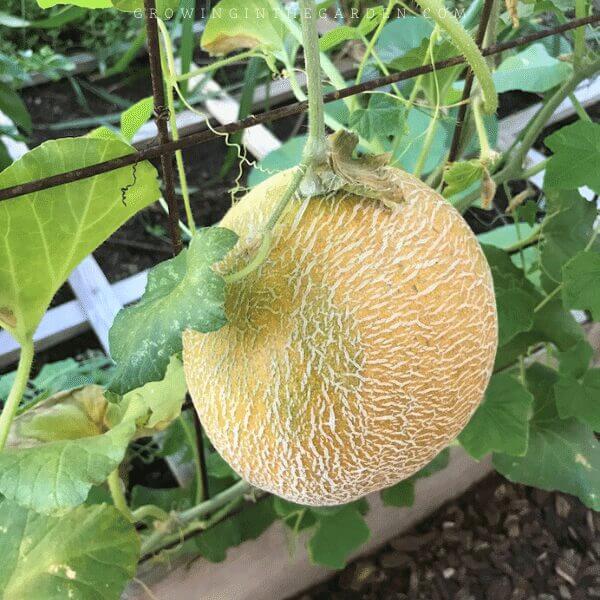
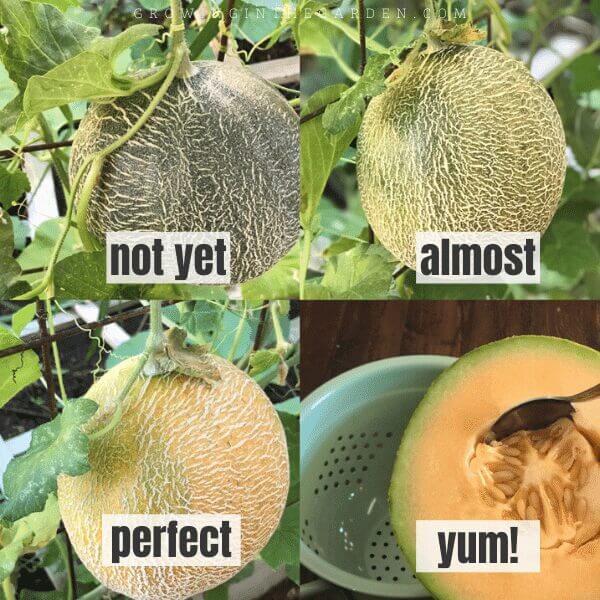
Melons last 3-5 days if left at room temperature. Uncut cantaloupe stored in the fridge lasts up to 2 weeks. Once the fruit is cut, it will keep for about 3 days in the refrigerator.

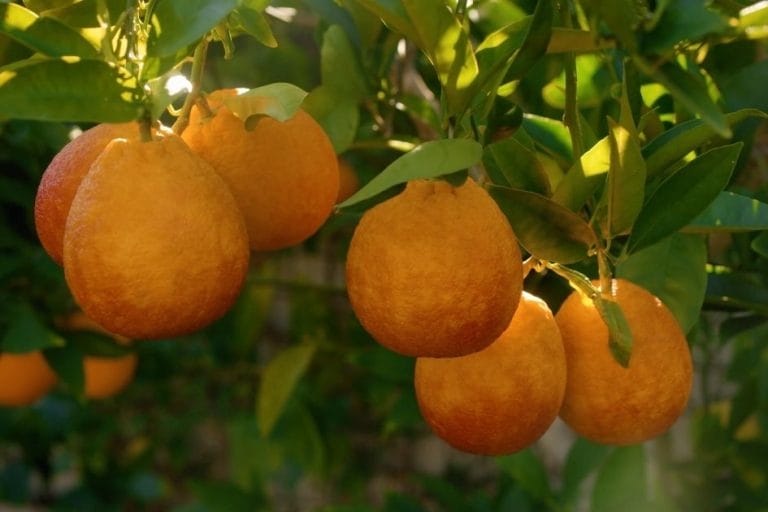
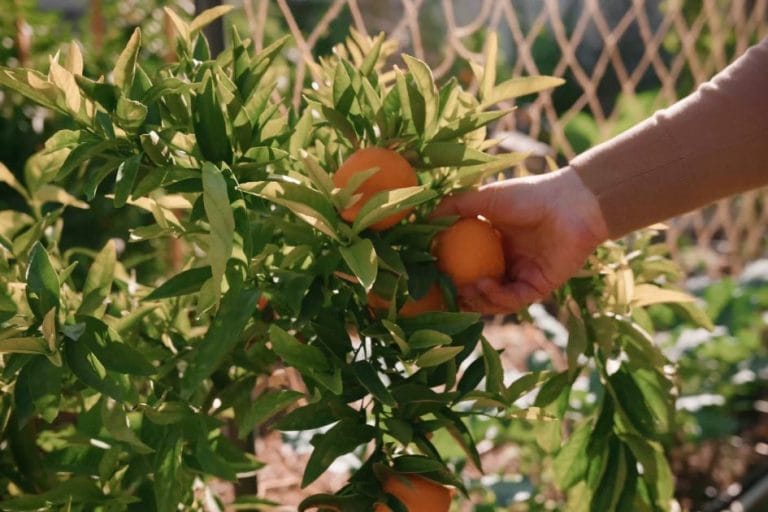
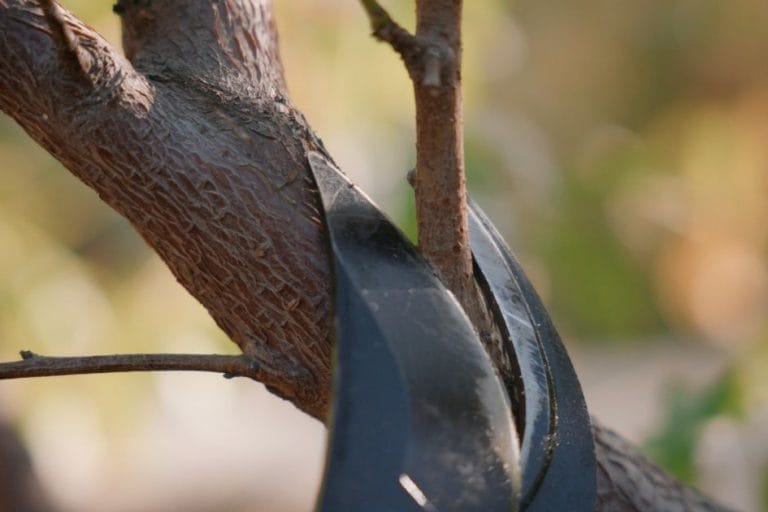


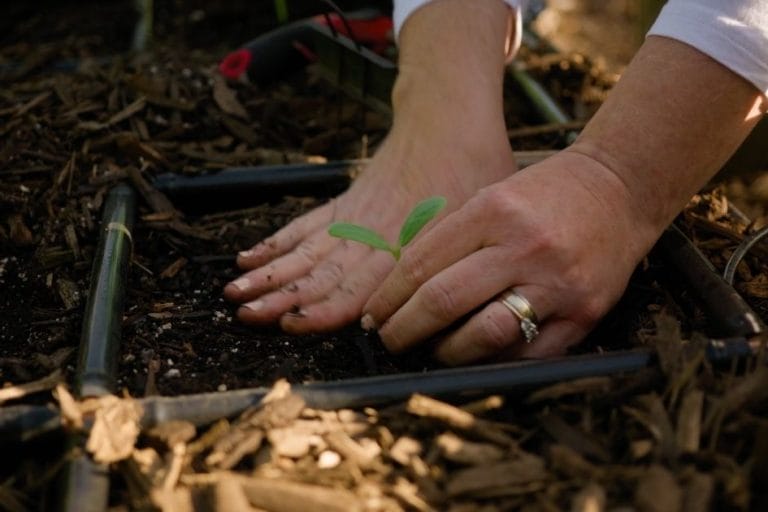
Hi, Angela!
I’m accidentally growing a huge amount of Cantaloupes from seeds I just threw in a big planter that I have with a Moringa tree. They have flowers and they’re blooming beautifully. I’m going to follow your tips to see If I can harvest at least one fruit. That would be amazing! Thank you so much for writing this article. Wish me luck! I’m in AZ too.
Do cantaloupe do well in containers with other vegetables? I’m thinking of planting some with my beans and summer squash.
Sure, as long as it is a large enough container, and you give it something to climb or allow it to spill over the sides. Cantaloupe vines grow large and can quickly overtake a container.
Angela, your calendar says to plant cantaloupe in june and july but this article says to plant in February?
Can we plant twice in arizona?
You can plant from mid-February through July here in the low desert.
We plant Ambrosia cantaloupe around May 15 in hopes of not getting a frost thereafter. However, we almost always get a frost into June….like this year on June 1. We plant a patch about 20′ by 45′ on thick black plastic (lifetime of 30+ years) in holes 4-5 feet apart, drilled into the plastic with a hole saw. A couple of seeds per hole, sometimes 3 seeds. Fifty holes give us 120 plants, give or take. Last year, we harvested over 400 melons which we gave away to friends and neighbors, plus our own family eating a ton of cantaloupe. Then we took off for a long trip and had a neighbor harvest 50+ more before the Fall frost while we were gone. We were told we couldn’t raise cantaloupe in our high desert climate due to the short growing season. We’ve proved “them” wrong and are doing it again this year. People tell us our cantaloupe are the best they’ve ever had in their life! There is more to this story….composted manure, automatic watering system, low or no maintenance, etc. I’m going to spray an Epsom salt solution on the cantaloupe tonight when the sun goes down. It’s our little secret for super sweet-tasting and fast-growing melons. Growing cantaloupe is our favorite hobby!
Wow! Thanks for sharing all your wisdom and cantaloupe with so many. Inspiring!
@Bart Merrill,
Would you happen to have a picture you could share? I’m interested in seeing the black plastic situation.
Your garden sounds dreamy!
I completely uprooted my cantaloupe plant…bad…later in the day, I saw all leaves hanging down.
I have about 7 that were growing.
I found what was left of the root. Not much at all. I re buried what was left .I pretty much killed it didn’t I?
Ideas?
One is just starting to vein up… will it continue if I pick it off..am I doomed????
Can’t believe it.
Besides the obvious, if anyone has any helpful info, let me know.
Thank you so very much.
I’m devastated.
So sorry to hear that. You could pick the fruit and it will continue to ripen indoors.
How long does it take to start to have a plant to come up from dirt . I plant the cantilope seeds today 11 May 2023.
Check the seed packet, it will usually give you a days to germination time.
@Mike Himelright, they come up within a week usually less , they grow really fast like a watermelon or cucumber vine will.. the vine can get really long so be prepared..i cut old tires in half an let them grow around in circles inside the tire so it saves a lot of space and also keeps the fruit off the ground ..
Thank you for your site Angela. I’m in north Phoenix and had a plant sprout from my compost I used to plant some flowers. I initially thought it was watermelon, but it turned out to be cantalope. . I now have for melons that are about 4″ in diameter.
Nice! I love volunteers!
I’m growing two cantaloupe plants for the first time and happened upon your site. They are growing well despite a cold, wet spring in Seattle. Please clarify what sounds inconsistent to me: Spraying foliage with epsom salt water vs not getting leaves wet to prevent mildew (which is unavoidable on squash plants in our humidity). Can this epsom salt water go into the soil instead? Thanks for the practical tips.
I updated the article, to remove the epsom salt recommendation. I haven’t seen a real benefit to using that. Best of luck with your crop!
i planted seeds…after 5 days i had sprouts …after 2 weeks i have nice 5-6 inch high plants…looking good so far… should i let them climb or rest on the ground(the ground would be easier)
Nice! It’s up to you. If you let them sprawl, consider giving them something to rest on to prevent pest damage. Keep an eye on the leaves and check for pests/diseases.
some of my cantaloupes are smaller than others is there a problem in the soil
You can get your soil tested to see if there are issues, but size variations (especially when there is more than one fruit on the vine) are normal.
@Angela Judd,
I’m going to try planting in a container and have them grow vertically. Any suggestion on how tall of a support i should get? Same question for cucumbers. Thanks!
At least 4-5 feet tall for both. You can also use ladder mesh block like in this post:https://growinginthegarden.com/add-vertical-space-in-the-garden/
What would be good companion plants/flowers/herbs for cantaloupe?
Basil, thyme, zinnias, gaillardia are all more heat tolerant that can grow well during the summer.